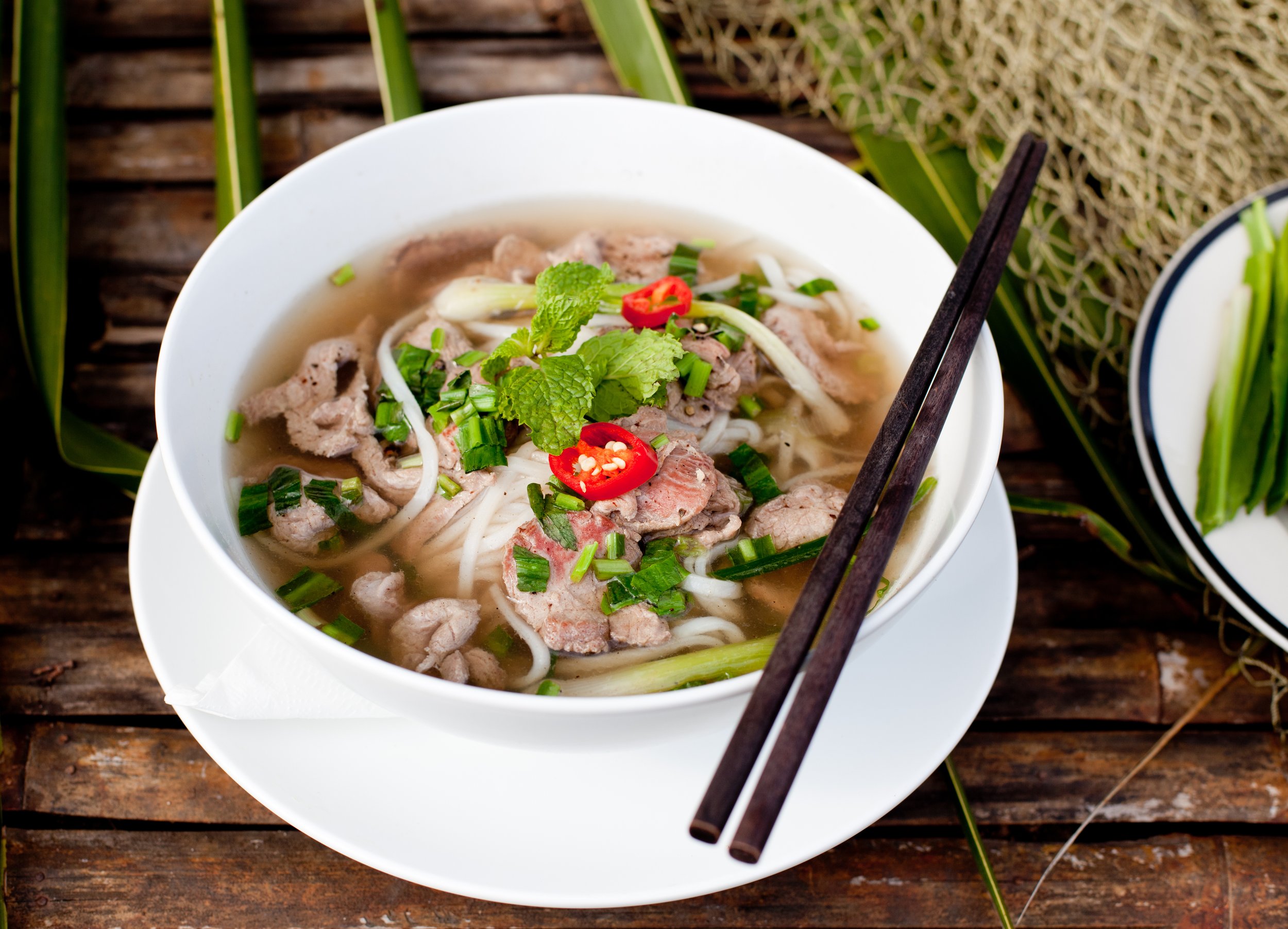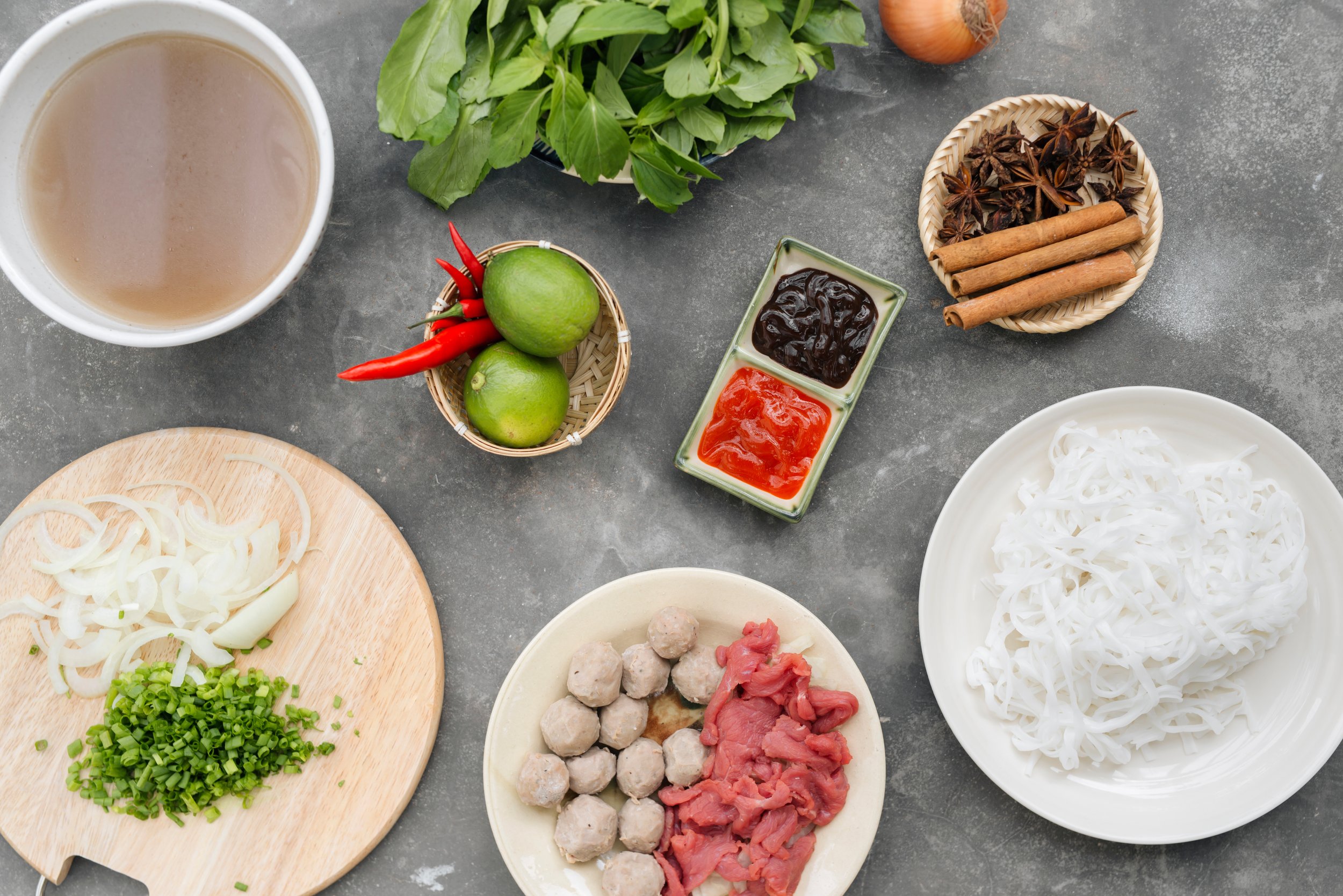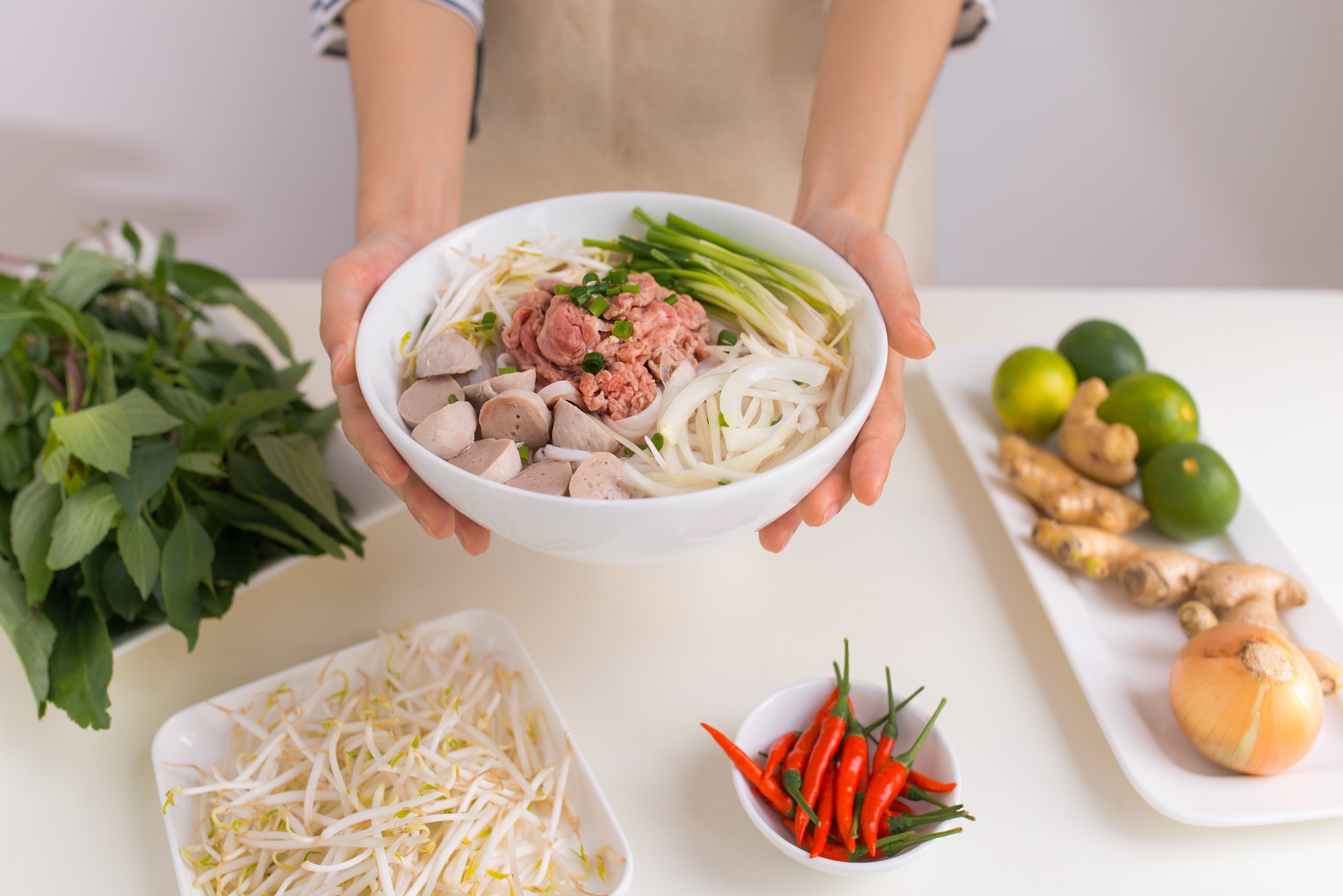Mastering the Art of Cooking Pho: A Step-by-Step Guide
There's something truly magical about the rich aroma and complex flavours of a steaming bowl of Pho, the beloved Vietnamese noodle soup. While it may seem like an intimidating dish to prepare, with the right guidance and a passion for culinary exploration, you can unlock the secrets to creating this iconic dish in your own kitchen. In this blog post, we present a comprehensive step-by-step guide that will help you master the art of cooking Pho, and the estimated cooking time is 3-5 hours.
Before you start to cook Pho, make sure you have prepared all of the following ingredients and tools:
The key components of Pho include rice noodles, aromatic spices (cardamon, star anise, cinnamon sticks, pepper, and cloves), beef bones, beef brisket, ginger, onion, spring onion, yellow rock sugar, and fish sauce.
For kitchen tools, it is essential to have a large stockpot, strainer, and cheesecloth. Trust us, the cheesecloth is a life-saver from floating aromatic spices! Once you have everything, you're so ready to cook your own delicious Pho.
Prepare your homemade broth
Step 1. Rinse the Bones
When you simmer bones, you probably have seen the "froth" which is the thing we would like to get rid of. It is important to note that we try to make the broth as clear as possible. In order to get that result, you need to rinse the bones with cold water, and maybe add some salt to remove any blood spots and bacteria.
After rinsing, bring the bones to a large stockpot with water to bring to a boil. However, we just parboil them and pour the water and bones into a strainer. Remember to rinse bones again with cold water to remove all of the impurities that are left on the bones. And also, you need to rinse the pot since there will be froth on the bottom and the sides.
Step 2. Char the Onion and Ginger
The charred onion and ginger will give a sweet taste and an excellent colour to the broth. Peel, rinse and cut the onion into 4 pieces. Rinse and cut ginger in half. You can broil either with an oven or an air-fryer for 10-15 minutes. After 8-10 minutes, you can turn onions and ginger so they are browned on all sides.
Step 3. Toast the Spices
While you are waiting for the onion and ginger to be charred, you can prepare to toast the spices. Simply put them into a dry pan over medium heat. You don't want the spices to be burned, so stay close and shake the pan whenever you feel necessary to make sure they toast and are not burned.
After 2-3 minutes, you will start to smell the fragrance, that's when they're ready to be in the pot. Then you can put the spices into the cheesecloth for the next step!
Step 4. Bring all together
Now you have parboiled bones, charred onion and ginger, and a bag of toasted spices, you can place all into the pot and add water to bring to a boil. Then lower the heat to simmer the broth. Add 1 & 1/2 tablespoons of salt, 1/4 cup of fish sauce, and a 1-inch piece of yellow rock sugar.
Simmering for at least 3 hours, uncovered. If you see foam (froth) rise to the surface, use a spoon to remove it.
After 3 hours, remove all of the ingredients inside the pot in order to strain the broth. At this stage, it depends on your preference as the broth will have a fat layer on the top. If you wish to enjoy the fat layer, just go for it. If not, you can skim the fat by using a spoon. The other way is to put it in the refrigerator overnight so that the fat will solidify which is much easier to remove.
Prepare your beef
It is also important to rinse the beef to purify the impurities. If you are having a beef shank, you can cook with the broth while being simmered (just parboil the shank). The other way to enjoy is to slice the meat and place it into the bowl then top with the hot broth.
Sometimes the second method may leave the beef rare (if the slice is not thin enough), so make sure the slice is thin enough to be either medium rare or medium well.
Cook the noodles (if you are using dry noodles)
Boil the water and put noodles inside the boiling water and cook until they become soft and opaque. Drain the noodles then rinse them with cold water to stop them from being sticky.




